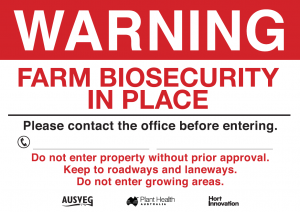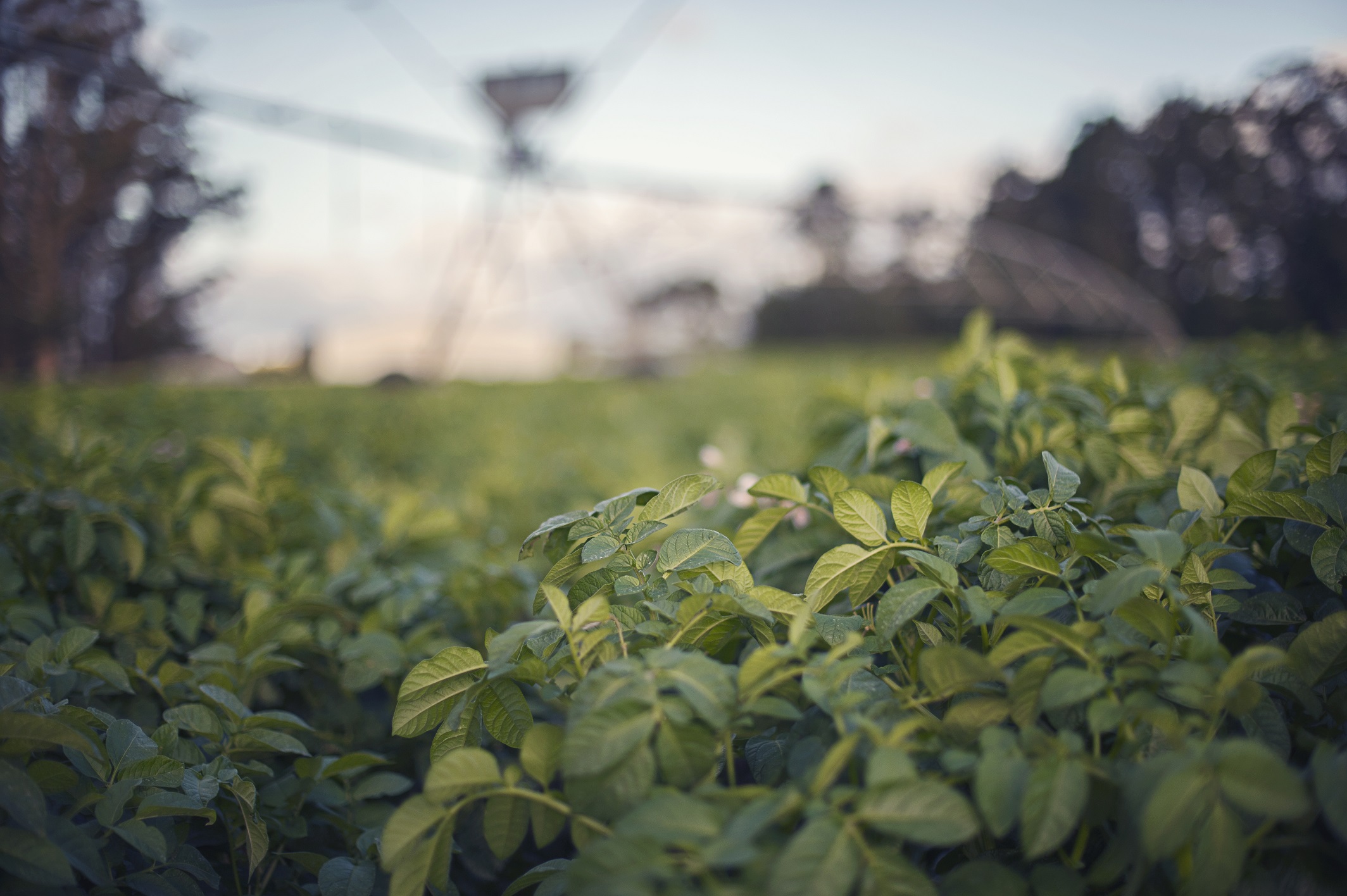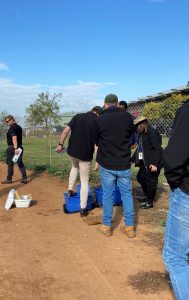Have you read the Potato Growers’ Biosecurity Manual?
Plant Health Australia (PHA) in partnership with AUSVEG have developed the Potato Growers’ Biosecurity Manual. This resource provides a foundation for you to identify the different pathways through which biosecurity risks can threaten your farm. Here, we provide a snapshot of farm practices and procedures that can be implemented to reduce these risks.
Biosecurity is a necessity
The potato industry is by far Australia’s biggest (by volume) vegetable commodity grown, with over 1.4 million tonnes of potatoes grown for human consumption and processing in 2019-2020. Potatoes are also the most valuable crop grown in Australia as measured by value of production, with a value of around $716 million in 2019-2020.
There are TWO major biosecurity risk groups to Australia’s productive potato industry:
- Exotic pests and diseases: These are not in Australia yet (e.g. Colarado potato beetle, Zebra chip (CLso)).
- Regionalised pests and diseases: That are present in Australia but are restricted to regions and/or can be kept off your farm through biosecurity practices (e.g. Tomato-potato psyllid, serpentine leafminer, bacterial wilt).
Pests and diseases that are new to your farm can reduce farm efficiency, crop yield and quality. When implemented effectively, on-farm biosecurity practices can provide insurance against this reduction in farm productivity as they reduce the risks associated with transporting new pests and diseases onto your farm.
If new pests and diseases spread to your farm due to a lack of farm biosecurity, your market access and freedom to sell your produce may become limited.
For example, following the detection of cucumber green mottle mosaic virus (CGMMV) in QLD in December 2019, New Zealand suspended the pathway for all fresh cucurbits from QLD. Over a year later, QLD curcurbit trade to NZ was allowed to resume, but under strict new trade conditions that specify growers must be certified as a ‘Pest Free Place of Production’. Part of this new PFPP management system dictates that growers must implement a farm biosecurity plan.
A similar situation may occur for the potato industry if a new exotic pest or pathogen arrives in the future. It is best to have a plan in place, so that one doesn’t need to be hastily developed in the event of a new incursion.
What transmission pathway holds the greatest risk for pest and disease introduction to your farm?
The movement of people, vehicles and equipment poses the biggest risk to farm biosecurity as this is the most common pathway for pests, diseases and weeds to travel on and around your property. By implementing biosecurity practices appropriate to your farm, you can greatly reduce the chances of introducing new pests and diseases to your property.
Start improving your biosecurity with the following achievable farm practices and procedures:
- Put up a farm biosecurity gate sign (All vegetable and potato levy payers are eligible to receive two free farm biosecurity signs. Contact AUSVEG to find out more or print your own online).
- Use a visitor register and inform all visitors of your farm biosecurity requirements.
- Control visitor access to production areas on your property (e.g., have one main farm access point and have a designated parking area for off-farm vehicles).
- Ensure equipment and machinery coming onto your property has been cleaned prior to entering production areas.
- Use dedicated on-farm vehicles for transport around the property, where possible – reduce the chances of transporting pest and diseases onto and around your property.
- Have footbaths (with disinfectant) and a boot cleaning station. All visitors to farm production areas should clean their boots on arrival and departure.

Other possible transmission pathways
There are four other major transmission pathways for pests and diseases to enter your property, and each pathway has its own associated risks to farm efficiency. To reduce the impact of these risks on your property, there are farm procedures and practices that are highly recommended and easy to implement. Find out about some of these practices below:
- Farm inputs
- Production practices
- Monitor crops and fallow areas for pests and diseases.
- Record the results of monitoring activities.
- Learn about exotic pests – so you know them when you see them.
- Property cleanliness (e.g., fences).
- Farm outputs
- Good farm hygiene (e.g., waste disposal, compost piles away from production areas).
- Post-harvest risks (e.g., Appropriate storage facilities to limit physiological aging and susceptibility to post-harvest disease).
- Feral animals and weeds
- Wild and feral animal access.
- Volunteer plants and weeds.
- Property and land damage (e.g. maintain fence lines).
Now that you know the transmission pathways, what’s next?
- Assess your own farm biosecurity practices against the biosecurity checklist (available in the Potato Growers’ Biosecurity Manual).
- Seek advice from consultants and agronomists and look into preparing your own Farm Biosecurity Plan.
Key takeaways
- A biosecurity plan is essential to your business.
- Implementing on-farm biosecurity practices can reduce the instances of plant pests, diseases and weeds, both protecting your business and leading to increased production efficiency.
- A biosecurity plan can protect your market access (e.g. proof of freedom).
- The riskiest transmission pathway for plant pests and disease is the movement of people, vehicles and equipment.
- Under circumstances where an exotic plant pest enters Australia, a biosecurity plan can offer you insurance against the pest.
- The responsibility of plant pest and disease biosecurity is shared between government, industry and community.
Find out more
Any unusual plant pest should be reported immediately to the relevant state or territory agriculture agency through the Exotic Plant Pest Hotline (1800 084 881). For further information, please contact AUSVEG on 03 9882 0277 or email science@ausveg.com.au.
The Farm Biosecurity Program is funded by the Plant Health Levy.



